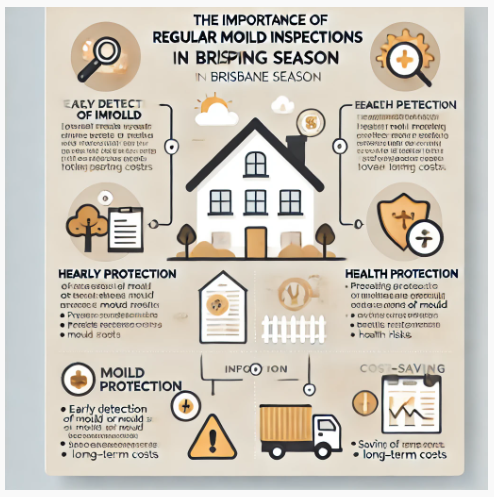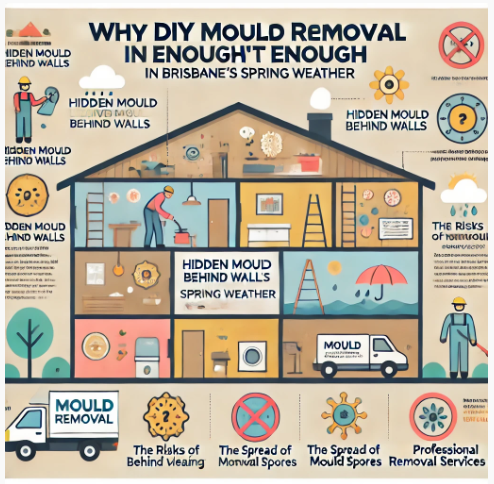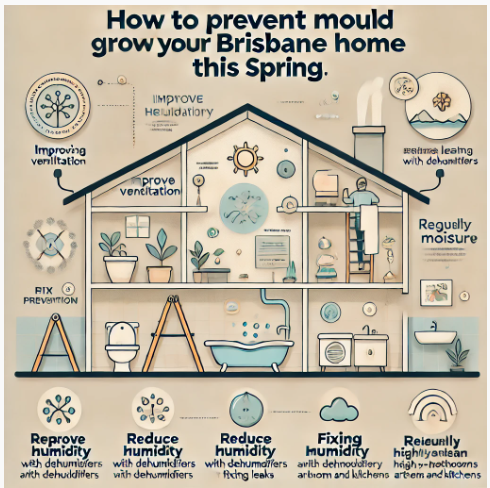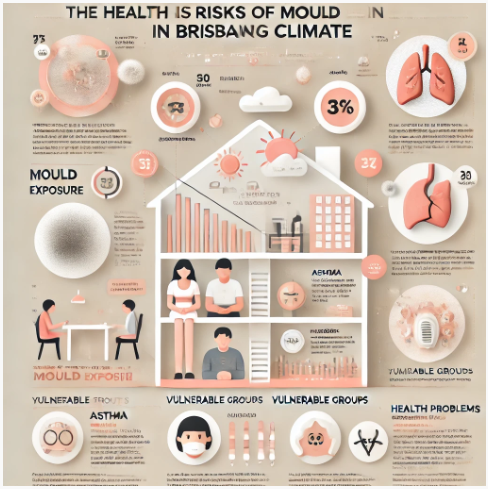Mould can be more than just a nuisance; it can pose serious health risks to you and your family. Understanding these risks is vital to appreciating the importance of mould removal in your Brisbane home.
What Are the Health Risks of Mould?
Mould can be more than just a nuisance. It can pose serious health risks to you and your family. Understanding these risks is vital to appreciating the importance of mould removal in your Brisbane home.
Respiratory Problems: Mould exposure can lead to a range of respiratory problems. For individuals with allergies or asthma, mould can trigger or worsen their symptoms. It can cause coughing, wheezing, sneezing, and shortness of breath. Even if you don’t have preexisting respiratory issues, mould exposure can still irritate your respiratory system.
Allergic Reactions: Mould spores are allergenic, which can cause allergic reactions in some people. These reactions can vary, from mild nasal congestion and skin rashes to more severe symptoms like hives and itchy, watery eyes.
Mycotoxins: Some mould species produce mycotoxins, which are toxic substances that can be harmful to humans. Stachybotrys chartarum, also known as “black mould,” is one such mould that can produce mycotoxins. Prolonged exposure to mycotoxins can lead to a range of health issues, including fatigue, headaches, and even more severe conditions like lung and kidney problems.
Vulnerable Groups: Certain individuals are at a higher risk when exposed to mould. These include children, the elderly, and individuals with compromised immune systems. For them, the health risks associated with mould exposure are more significant.
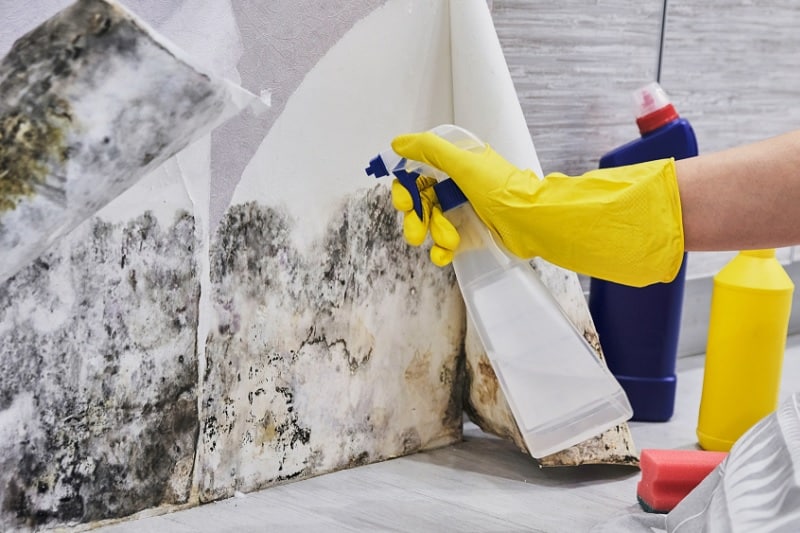
What Are the Different Mould Removal Methods?
Now that you understand the importance of tackling mould, let’s explore some effective methods for mould removal in Brisbane. These methods can be broadly categorised into do-it-yourself (DIY) and professional solutions.
How Does DIY Mould Removal Work?
For small and isolated mould infestations, you can try to remove the mould yourself. Here are the steps to follow:
Gather Your Supplies: You’ll need gloves, a mask, a scrub brush, detergent, and water.
Isolate the Area: Close off the affected area to prevent mould spores from spreading.
Scrub the Mould: Use the scrub brush and a mixture of detergent and water to clean the mould from the surface.
Dry the Area: Ensure the area is completely dry to prevent mould from returning.
While this approach can work for minor mould issues, it may not be suitable for larger or more widespread infestations.
What Are the Benefits of Professional Mould Removal Services?
For extensive or severe mould problems, it’s often best to turn to professionals. Here are the advantages of hiring a mould removal service in Brisbane:
Expertise: Professionals are trained to handle moulds safely and effectively.
Advanced Equipment: They have specialised tools and equipment to tackle even the toughest mould issues.
Thorough Removal: Professionals ensure that all mould is completely removed, reducing the chances of it returning.
Safety: Professionals take necessary precautions to protect your health during the removal process.
While professional services come at a cost, they offer a comprehensive solution that can provide peace of mind.
How Can You Prevent Mould in Your Home?
The best way to deal with mould is to prevent it from appearing in the first place. Here are some practical steps to keep your home mould-free:
Control Humidity: Use dehumidifiers to maintain the humidity level in your home below 50%.
Proper Ventilation: Ensure good airflow in your home, especially in moist areas like bathrooms and kitchens.
Regular Inspection: Regularly check for signs of mould in your home, like musty odours or discoloured spots.
Immediate Repairs: Address leaks or water damage promptly to prevent mould growth.
What Are the Scientific Factors Behind Mould Growth?
To better understand mould and how to prevent it, it’s essential to grasp the scientific factors contributing to mould growth. Mould is a fungus that thrives in conditions with the right combination of temperature, moisture, and nutrients.
Temperature: Mould prefers temperatures between 77°F (25°C) and 88°F (30°C). While mould can grow in colder and warmer conditions, this temperature range is most conducive to its rapid development.
Moisture: Moisture is a primary factor in mould growth. Mould requires a water source to thrive, making it more likely to appear in damp environments. High humidity levels also contribute to moisture, creating an ideal breeding ground for mould.
Nutrients: Mould feeds on organic materials. This can include wood, paper, fabric, drywall, and even dust. With the availability of organic nutrients and the right combination of temperature and moisture, mould spores can begin to grow and spread.
How Does Mould Impact Psychology and Cognitive Science?
You might wonder how psychology and cognitive science are related to mould removal. The connection lies in our perception of the environment. A mould-infested space can affect our mental well-being. Studies in psychology show that living in a mouldy environment can lead to stress, anxiety, and even cognitive impairments. It’s a reminder of the interconnectedness of our physical surroundings and our mental health.
Stress and Anxiety: Living in a mouldy environment can lead to chronic stress and anxiety. The uncertainty about potential health risks, the financial burden of addressing the mould issue, and the feeling of being unsafe in your own home can all contribute to heightened stress and anxiety levels.
Cognitive Impairments: Studies have shown that mould exposure can have cognitive effects. People living in mouldy environments have reported cognitive impairments, memory problems, and difficulties in concentration. While the exact mechanisms behind these cognitive impacts are still under investigation, it highlights the significance of a clean and mould-free living space for mental well-being.
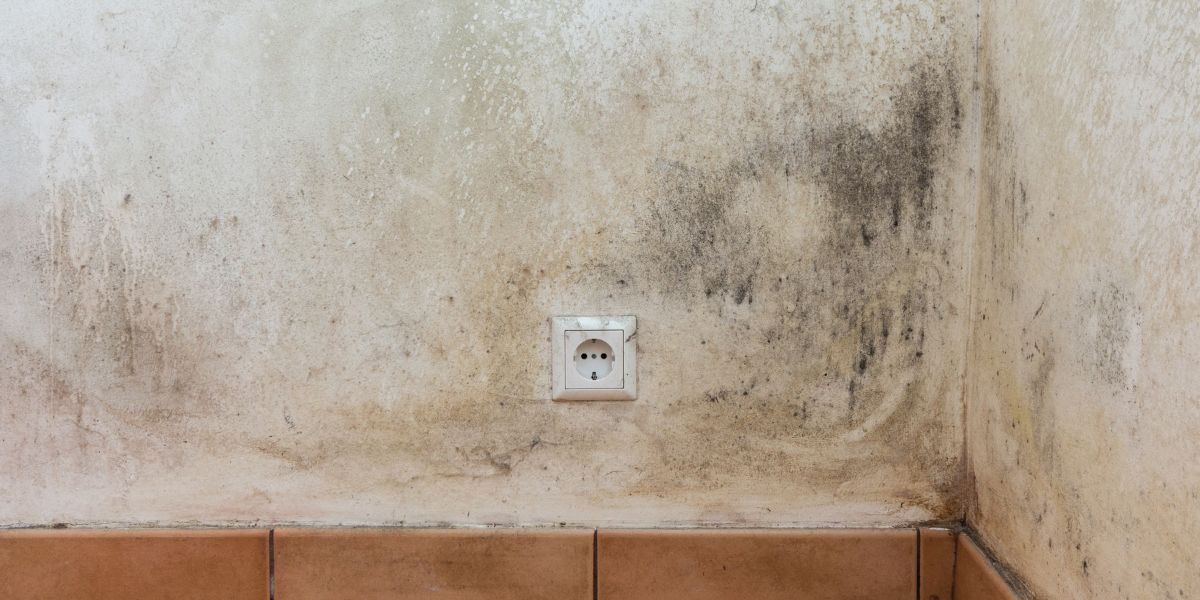
How Do We Balance Perspectives on Mould?
While it’s essential to know how to remove mould effectively and the potential health risks it poses, it’s also crucial to be aware of differing opinions. Some argue that certain mould species have benefits, like penicillin production.
However, the potential health risks far outweigh these benefits. It’s essential to balance understanding mould’s role in nature and addressing it as a health hazard when it invades our homes.
Beneficial Mould Species: Not all mould is harmful. Some mould species have proven beneficial to humans. For example, Penicillium mould is the source of penicillin, a widely used antibiotic. Other moulds are involved in producing various cheeses, such as blue cheese. These beneficial moulds have valuable applications in medicine and culinary arts.
Natural Decomposers: Moulds play a crucial role in nature as natural decomposers. They break down organic matter, returning nutrients to the ecosystem. Without moulds and other decomposers, the natural world would struggle to recycle and renew organic materials.
The Balance: While these points acknowledge the benefits of some mould species, they should not diminish the importance of addressing harmful mould in your home. The potential health risks far outweigh the benefits of a few mould species. It’s vital to differentiate between mould used in controlled, beneficial settings and the mould that invades our living spaces, potentially harming our health.
Tackling mould growth in your Brisbane home is a necessary task that requires the right approach. Whether you choose the DIY route or hire professionals for mould removal in Brisbane, it’s crucial to act promptly and effectively.
Additionally, understanding the science of mould growth, its impact on your health, and the connection to psychology and cognitive science can help you make informed decisions. Remember, preventing mould is always the best strategy, so take steps to keep your home dry and well-ventilated to protect your health and well-being.
